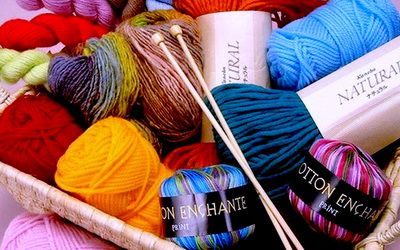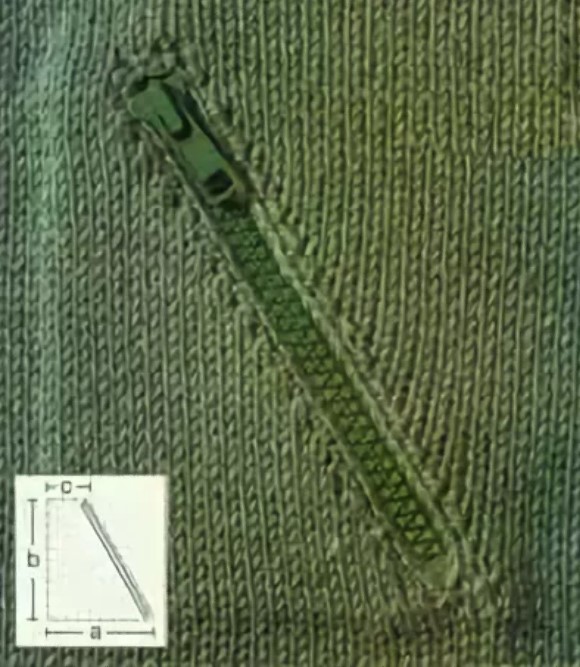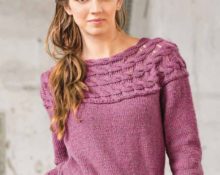 Pockets for knitted items can not only be a decoration. Many people love to use it in their clothes so much that they cannot imagine any item without it. But pockets can be very different, and before making such items of clothing, you should know their types and how to make them yourself.
Pockets for knitted items can not only be a decoration. Many people love to use it in their clothes so much that they cannot imagine any item without it. But pockets can be very different, and before making such items of clothing, you should know their types and how to make them yourself.
Yarn and colors
 Yarn, as well as color, can be very different. But many craftsmen are accustomed to following the rule and making the pocket and the item in the same color. Since any incorrect cut can easily ruin the look of the product.
Yarn, as well as color, can be very different. But many craftsmen are accustomed to following the rule and making the pocket and the item in the same color. Since any incorrect cut can easily ruin the look of the product.
But if everything is in the same tone, it won’t be noticeable. And the texture of the fabric itself is more convenient if it matches completely and you don’t have to change the knitting needles every time you perform this element.
Types of internal (welt) pockets with knitting needles
There are three types of welt pockets. This horizontal, vertical and inclined pocket. The shape of the slanted pocket has something in common with a trapezoidal pocket. We will tell you in detail about each of these pockets in the article.

Welt pocket with slope
This pocket is considered the most difficult. The fact is that in addition to knitting it together with the fabric of the item, you will also need to observe the required inclination in work.

For work use:
- yarn as for the main item;
- knitting needles according to the thickness of the thread.
Measurements
Preliminarily estimate how many cm are required for the height and width of the pocket. Also evaluate the fold line.
Sample
Based on the sample, estimate how many loops and how many rows will be needed for the pocket.
Advice! It is advisable to practice cutting the loops for a smooth fold of the pocket.
Interior
First start knitting the inner part. Knit fabrics in a similar pattern. With small yarn overs along the front surface.

Facial surface
Compound
At the point where the slope line begins, connect the loops of the upper work fabric with the inner loops of the pocket. Knit further fabrics separately. One with an inner piece, the other with a fold. For the extreme loops of the fold, use garter stitch.
 The work is completed by joining the stitches at the top of the pocket.
The work is completed by joining the stitches at the top of the pocket.

Vertical pocket
A beautiful canvas with stars is made with knitting needles, but it seems even more attractive with an original element.

For work use:
- medium thickness yarn;
- knitting needles for yarn thickness.
Measurements
Measure the length and width measurements for the intended product.

Sample
Make a sample with knitting needles and calculate the knitting density for it. Using it, you can then recalculate the number of loops for the width and the number of rows for the height of the product.

The basis
First make the required depth along the width according to the pattern of the canvas. Then, in the knitted product, select the loops for this insert and combine them into a common fabric. Next, knit the right side and the left side separately. Where the left side has the loops joining with the inside.And the right one has a top edge and edge made of garter stitch, which looks a little like elastic.
Knit to the desired height, and combine the loops for the fabric of the right and left sides at the top. Simply sew the inside with one seam.
Horizontal pocket
Finally, the simplest of the series is horizontal. The thing is that it can be of any size and made according to any pattern. It is important to simply duplicate it on the inside. In this case, the following are duplicated elegant braids.

For work use:
- yarn as for the entire product;
- knitting needles according to the thickness of the selected ball.
Measurements
Measure the length and width of the rectangle.
Sample
Make a small sample according to the fabric pattern and calculate the knitting density for it. She will later tell you how many loops to adjust for the width, and how many rows to use for the height of the product.
 Interior
Interior
Duplicate the top pattern of the panel, and simply knit the element of the desired depth.
Compound
Combine the work with the inside and swap the loops. Simply put it aside from the canvas, and use the cutting to continue the piece.
Rubber
Then, from the set aside loops, knit an elastic band according to the pattern.

All that remains is to sew the elastic along the inside and sides.

These are the original models offered to craftsmen for work.


 0
0





